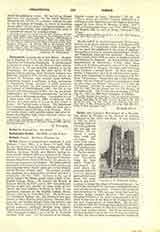

Coracesium, a titular see of Asia Minor. According to Ptolemy (V, 5, 3), this town was not in Cilicia Tracheia, but in Roman Pamphylia. It had belonged to Isauria according to the pre-Roman ethnic system, and from A.D. 74 was probably included in Lycia-Pamphylia. Its port was the chief center of the famous Cilician pirates: there Diodorus Tryphon was killed by Antiochus VII, and the pirates utterly destroyed by Pompey, who levelled their fortress. Coracesium became a suffragan of Side, metropolis of Pamphylia Prima. Lequien (I, 1007) mentions only four bishops, the first having been present at the Council of Constantinople (381), the last at the Council of Constantinople in 681; but the see is still mentioned in the “Notitiae episcopatuum” as late as the twelfth or thirteenth century. Coracesium is now a little town with about 2000 inhabitants (500 Greeks), the chief center of a caza in the vilayet of Konia. Its Turkish name is Alaya. The Armenians have completely disappeared, though the town was a very important one in the time of the Rupens. There are curious ruins, walls, ancient tombs, and other remains of antiquity, and many romantic stories are associated with it.
S. PI TRIDES

